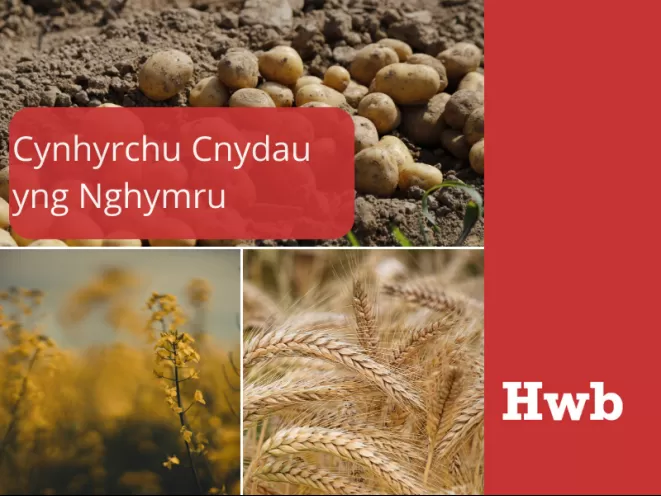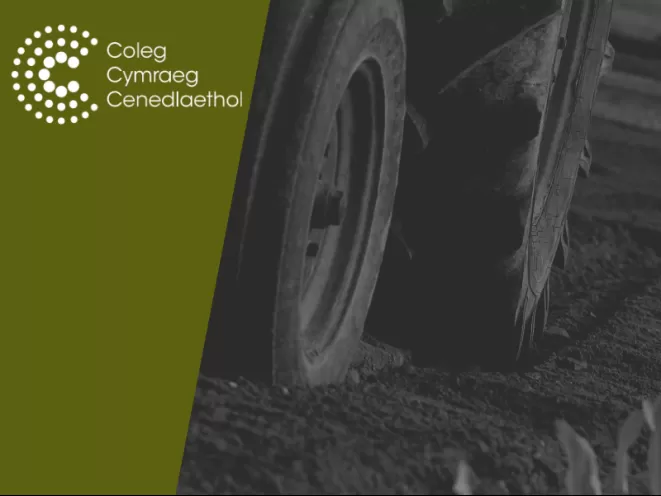Beef and lamb production website for learners studying a Level 2 and 3 qualifications in Agriculture. Here you’ll learn about different aspects of the meat production industry, from finance and business management to suitable breeds and different systems. Get browsing! The website contains seves units on producing beef: Overview of the UK Beef Industry Beef Cattle Breeds Suckler Cow System and Source of Store Cattle Introduction to Beef Finishing Systems Managing Herd Fertility and Replacements Health and Welfare of Beef Cattle Business Considerations When Beef Farming and seven lamb production units: Overview of the UK Sheep Industry Breeds and the Stratification System Understanding the Ewe Year of the Shepherd The Lamb Market The Main Sheep Husbandry Tasks Business Considerations When Sheep Farming
Crop production in Wales
This resource looks at crop production in Wales. It is suitable for learners in further and higher education studying programmes from levels 2 to 6. There are eight units each containing information on different aspects of crop production These include aspects of cultivation, establishment, growth, manuring, crop protection, harvesting and storage. The units are as follows: Introduction to crop growing in Wales Crop cultivation Crop establishment Crop growth and establishment Manuring Crop protection Harvesting Crop Storage This resource is on Welsh Government's HWB website and was published by Welsh Government.
Echelgais (Welsh only)
A Welsh medium resource on the HWB website aimed at Post-16 learners, concentrating on 6 subject areas: Agriculture, Business, Drama, Leisure and Tourism, Health and Care and Early Years and the Media.
Are small peptides a nutrition source for plant and micro-organisms in the maritime Antarctic?
Nitrogen (N) is the most important element that controls plant growth. During the past twenty years, our understanding of which N species are important for plant growth has developed significantly but it is still thought that large nitrogenous molecules need to be broken down into their constituent amino acids to be available for plant and microbial growth. This paper builds on our understanding of this process and suggests that small peptides are equally important for microbial nutrition and that soil microbes outcompete plants for low molecular weight N compounds in maritime Antarctic soil.
Worm Research Project
Nod y prosiect hwn oedd deall gwasgariad y parasit llyngyr y rwmen yng Nghymru. Gweithiodd gwyddonwyr o IBERS, Prifysgol Aberystwyth, gydag aelodau CFfI ar draws Cymru i ddarganfod ym mha ffermydd yr oedd llyngyr y rwmen yn bresennol.
Ensuring future availability of ruminant products of the highest quality
Government statistics illustrate that by 2050 there will be a shortage of meat and milk due to globalpopulationgrowth and the increaseddemand from the Far East. Ensuring food security in terms of availability and nutritionalsafety is, therefore, important for our future existence. Central to achieving milk and meat security are ruminants. Ruminants have a four chambered stomach composed of the reticulum, rumen, abomasum and omasum with microbial fermentation of forage occurring in the rumen. Rumen microbial fermentation is largely responsible for animal production, ruminant product quality and much of greenhouse gas emissions. Indeed, when forage reaches the rumen, the rumen microbes degrade the plant cell wall and subsequently metabolise plant cell content, including plant amino acids and proteins which they convert into proteins that they can utilise. In order to ensure availability of milk and meat of the best possible quality (with the least greenhouse gas emissions) for the future, we must increase our understanding of the plant-microbe interactome using the principles of systems biology and 'omic' technology.





